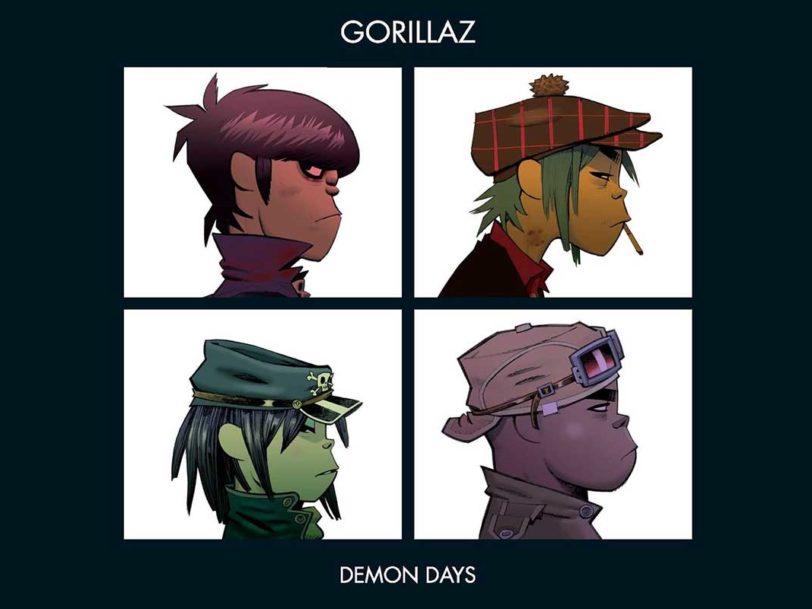It’s unlikely that even Damon Albarn could have foreseen the success of Gorillaz’s self-titled debut album. Released in 2001, it gave Albarn unprecedented global success – particularly in the US, where his fortunes with Blur, the band he’d first found fame with, had often been mixed. Released four years later, the hip-hop inspired cartoon side-project’s follow-up, Demon Days, took things to another level, becoming the biggest-selling album of Albarn’s career, eclipsing landmark Blur records and giving its mastermind a huge amount of artistic freedom. Hidden behind his animated band, Albarn could try things that he would never have dared as the frontman of one of the biggest indie bands of the 90s.
Listen to Demon Days here.
Exciting pop alchemy
Rather than repeat the tried-and-tested formula that had worked so well on Gorillaz’s debut, Albarn mixed things up from the off, with Danger Mouse replacing Dan The Automator on production duties. The decision demonstrated Albarn’s eye for spotting up-and-coming talent: Danger Mouse had only recently come to prominence with The Grey Album (an innovative mash-up of The Beatles’ “The White Album” and Jay-Z’s The Black Album), but that was enough to convince Albarn that he was the man for the job.
Similarly, while Gorillaz’s debut had featured a smattering of star turns (Talking Heads’ Tina Weymouth and Chris Frantz, Ibrahim Ferrer of Buena Vista Social Club, Del The Funky Homosapien), for Demon Days Albarn aimed big, recruiting a fantastically disparate array of talent to bring his vision to life, including De La Soul, Neneh Cherry, MF Doom, Shaun Ryder, Marina Topley-Bird, Dennis Hopper and Roots Manuva.




